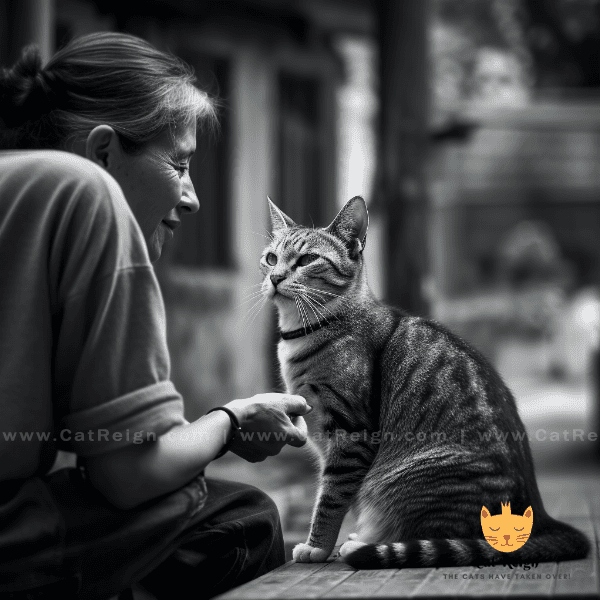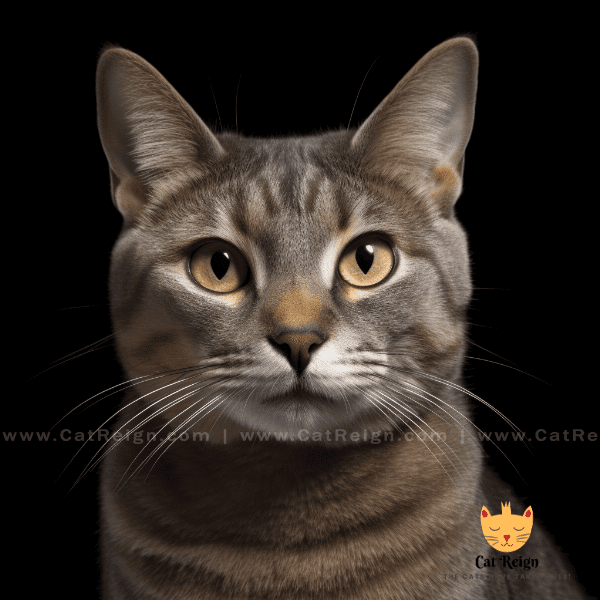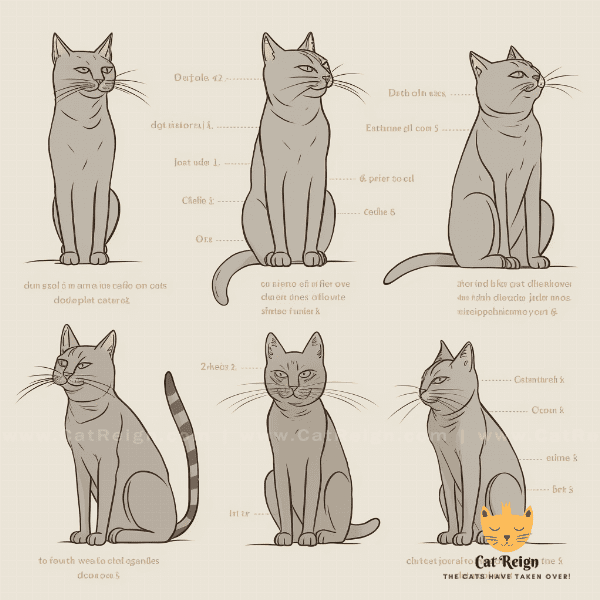Table of Contents
- Why Understanding Feline Communication is Important
- Decoding the Basics of Cat Body Language
- The Eyes Have It: What a Cat’s Eyes Reveal
- Ears Up, Ears Down: What Your Cat’s Ears are Telling You
- The Tail Tells All: Deciphering Your Cat’s Tail Movements
- Purring, Meowing, and Hissing: What Your Cat’s Vocalizations Mean
- Putting it All Together: Interpreting Your Cat’s Body Language
- Common Misunderstandings About Feline Communication
- Tips for Improving Communication with Your Cat
- Conclusion: Enhancing Your Bond Through Understanding
Why Understanding Feline Communication is Important
As a cat owner, understanding your cat’s body language and vocalizations is crucial for building a strong and healthy relationship with your feline friend. By being able to interpret your cat’s behavior, you can better anticipate their needs and respond appropriately, leading to a more harmonious household.
Strengthening the Bond
One of the key benefits of understanding feline communication is that it can help strengthen the bond between you and your cat. When you are able to interpret your cat’s signals correctly, you can respond to their needs more effectively. This can help build trust and deepen your relationship with your cat.
Promoting Emotional Health
Another important reason to understand feline communication is to promote your cat’s emotional health. Cats are complex creatures that experience a wide range of emotions. When you are able to pick up on your cat’s body language and vocalizations, you can better understand their moods and help them feel more comfortable and secure in their environment.
Preventing Misunderstandings
Misunderstandings between cats and their owners can often lead to behavior issues or even accidents. By understanding feline communication, you can prevent misunderstandings from occurring. For example, if you know that a cat’s flattened ears and twitching tail are signs of aggression, you can avoid petting your cat when they are displaying these behaviors.
Improving Health and Safety
Finally, understanding your cat’s body language and vocalizations can also help you identify potential health and safety concerns. If your cat suddenly starts hissing and arching their back, for example, they may be in pain or feeling threatened. By being able to recognize these signs, you can take steps to address any health issues or potential dangers in your cat’s environment.
In conclusion, understanding feline communication is essential for building a strong and healthy bond with your cat, promoting their emotional well-being, preventing misunderstandings, and ensuring their health and safety.
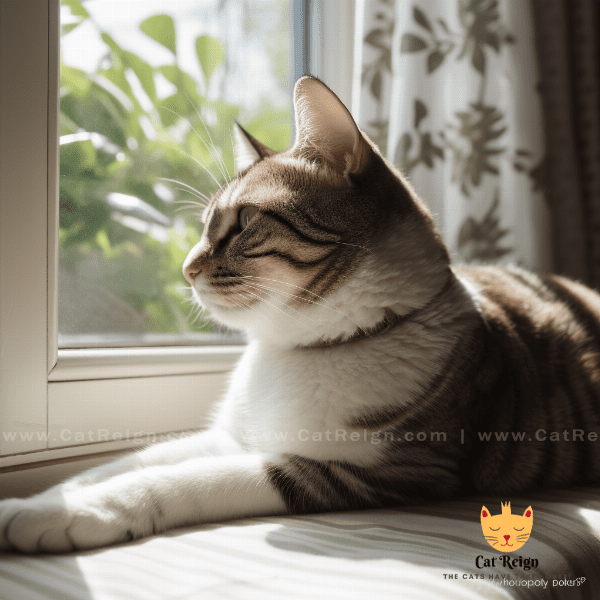
Decoding the Basics of Cat Body Language
Cats use a variety of body language signals to communicate their moods and needs to their owners. Understanding these signals is the first step in learning to communicate effectively with your feline friend.
Posture
A cat’s posture can convey a great deal of information about their mood. When a cat is feeling confident and relaxed, they will typically stand tall with their tail held high. On the other hand, if a cat is feeling anxious or threatened, they may crouch down low with their tail tucked between their legs.
Tail Movements
A cat’s tail can also provide important clues about their mood. When a cat’s tail is twitching, it may be a sign that they are feeling playful or excited. However, a tail that is thrashing back and forth can be a sign of agitation or aggression. Conversely, a tail that is held low and still may indicate that a cat is feeling fearful or submissive.
Facial Expressions
A cat’s facial expressions can be subtle, but they can also provide valuable information about their mood. For example, if a cat’s ears are held back against their head, it may be a sign that they are feeling anxious or threatened. Similarly, if a cat’s pupils are dilated, it may be a sign that they are feeling excited or frightened.
Vocalizations
Finally, a cat’s vocalizations can also provide important information about their mood. Meowing, for example, can be a sign that a cat is feeling playful or seeking attention. On the other hand, hissing or growling can indicate that a cat is feeling threatened or aggressive.
In conclusion, decoding the basics of Cat body language is an important step in understanding your cat’s moods and needs. By paying attention to your cat’s posture, tail movements, facial expressions, and vocalizations, you can better communicate with your feline friend and build a stronger bond.

The Eyes Have It: What a Cat’s Eyes Reveal
A cat’s eyes are not only beautiful, but they also provide important clues about their mood and well-being. Understanding what a cat’s eyes are revealing can help you communicate more effectively with your feline friend.
Pupil Size
One of the most important things to pay attention to when looking at a cat’s eyes is the size of their pupils. When a cat’s pupils are dilated, it can indicate that they are feeling excited, scared, or stressed. Conversely, when a cat’s pupils are constricted, it can be a sign that they are feeling calm and relaxed.
Blinking
Cats also use blinking as a form of communication. Slow blinks, also known as “kitty kisses,” are a sign of affection and trust. If your cat blinks slowly at you, it’s a sign that they feel comfortable and safe in your presence. Returning a slow blink can help reinforce this bond between you and your cat.
Staring
While cats may seem to stare blankly at nothing, staring can actually be a form of communication. If your cat is staring directly at you without blinking, it may be a sign that they are feeling threatened or are trying to communicate a need or desire.
Third Eyelid
Cats also have a third eyelid, called the nictitating membrane, which can be partially visible when they are feeling relaxed or sleepy. However, if you notice that your cat’s third eyelid is visible when they are awake and alert, it may be a sign that they are feeling ill or stressed.
In conclusion, a cat’s eyes can reveal a great deal about their mood and well-being. By paying attention to their pupil size, blinking, staring, and third eyelid, you can better understand your cat’s needs and emotions, and communicate more effectively with your feline friend.

Ears Up, Ears Down: What Your Cat’s Ears are Telling You
Cats are known for their expressive ears, which can swivel and tilt in many directions. Understanding what your cat’s ears are telling you is an important part of interpreting their body language.
Ears Forward
When a cat’s ears are forward and facing straight ahead, it typically means that they are feeling alert and interested in their surroundings. This is a common posture when a cat is hunting, playing, or exploring.
Ears Back
If a cat’s ears are flattened against their head, it can be a sign that they are feeling threatened or fearful. This can be accompanied by other signs of stress, such as hissing or growling.
One Ear Forward, One Ear Back
Sometimes a cat’s ears will be in different positions, with one ear forward and the other back. This can indicate that the cat is feeling uncertain or conflicted about something in their environment. It’s important to pay attention to other body language signals to determine what might be causing this reaction.
Twitching Ears
Twitching ears can be a sign that a cat is feeling playful or curious. It can also be a sign that they are feeling a bit on edge, especially if their other body language signals are indicating stress.
In conclusion, understanding what your cat’s ears are telling you is an important part of decoding their body language. Whether their ears are forward, back, or somewhere in between, it’s important to pay attention to this subtle but significant aspect of feline communication.

The Tail Tells All: Deciphering Your Cat’s Tail Movements
A cat’s tail is one of the most expressive parts of their body, and can provide important clues about their mood and intentions. Understanding what your cat’s tail movements mean is an essential part of interpreting their body language.
Tail Up
When a cat’s tail is held up high and puffed out, it can be a sign that they are feeling confident and content. This posture is often seen when a cat is greeting their owner or other cats.
Tail Down
If a cat’s tail is held low or tucked between their legs, it can be a sign that they are feeling anxious or afraid. This posture can also be seen when a cat is feeling submissive.
Tail Twitching
A twitching tail can indicate that a cat is feeling playful or excited, but it can also be a sign that they are feeling agitated or anxious. It’s important to pay attention to other body language signals to determine what might be causing this reaction.
Tail Lashing
When a cat’s tail is lashing back and forth rapidly, it is often a sign that they are feeling threatened or aggressive. This is a warning signal that should be taken seriously.
Tail Wrapping
Sometimes a cat will wrap their tail around their body, which can be a sign that they are feeling relaxed and comfortable. This posture is often seen when a cat is sleeping or lounging.
In conclusion, a cat’s tail movements can provide valuable insights into their mood and intentions. By paying attention to whether their tail is up or down, twitching or lashing, or wrapped around their body, you can better understand what your cat is trying to communicate and respond accordingly.
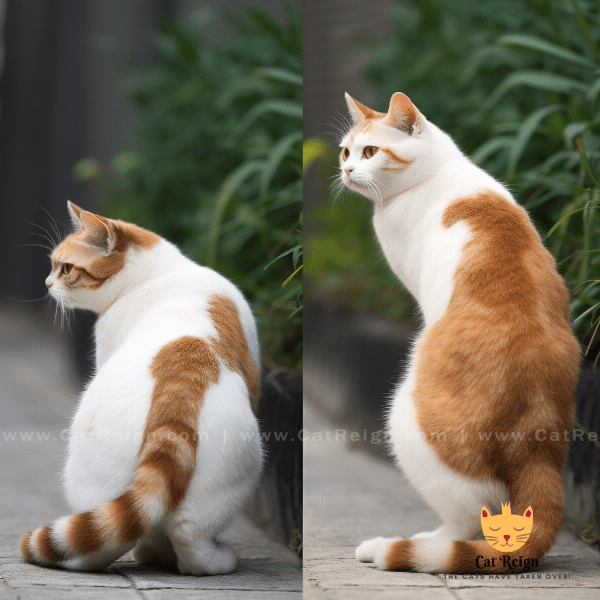
Purring, Meowing, and Hissing: What Your Cat’s Vocalizations Mean
Cats are known for their wide range of vocalizations, from gentle purring to loud hissing. Understanding what your cat’s vocalizations mean can help you better communicate with your feline friend and meet their needs.
Meowing
Cats use meowing as a form of communication with their owners. A meow can be a request for attention or food, a greeting, or a sign of distress. It’s important to pay attention to the tone and duration of the meow, as well as any other body language signals, to determine what your cat is trying to communicate.
Hissing
When a cat hisses, it is typically a sign of aggression or fear. Hissing is a warning signal that is meant to deter potential threats. If your cat is hissing, it’s important to give them space and avoid making any sudden movements that might escalate the situation.
Chirping and Chattering
Some cats make a chirping or chattering sound when they see birds or other prey animals. This sound is thought to be an instinctual hunting behavior, and is often accompanied by a swishing tail and dilated pupils.
Growling
Similar to hissing, growling is a sign that a cat is feeling threatened or aggressive. If your cat is growling, it’s important to give them space and avoid approaching them until they have calmed down.
In conclusion, cats use a variety of vocalizations to communicate with their owners and other cats. By paying attention to the tone and context of their meows, hisses, purrs, and other sounds, you can better understand your cat’s needs and emotions, and respond accordingly.
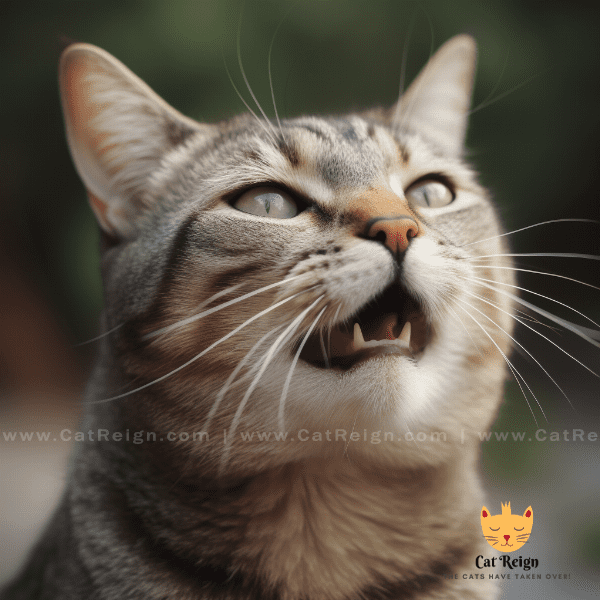
Putting it All Together: Interpreting Your Cat’s Body Language
Interpreting your cat’s body language is a complex process that requires paying attention to a variety of signals, including posture, tail movements, facial expressions, and vocalizations. By putting it all together, you can gain a more complete understanding of your cat’s mood and needs.
Context is Key
When interpreting your cat’s body language, it’s important to consider the context of the situation. For example, a cat that is purring while kneading with their paws is likely feeling relaxed and content, while a cat that is purring while their ears are flattened back against their head may be feeling anxious or stressed.
Look for Patterns
Another important part of interpreting your cat’s body language is looking for patterns in their behavior. For example, if you notice that your cat’s tail is always twitching when they are sitting in a certain spot in the house, it may be a sign that something in that area is making them feel uncomfortable.
Pay Attention to Changes
It’s also important to pay attention to changes in your cat’s behavior. If your cat suddenly starts hissing or growling, it may be a sign that they are feeling threatened or ill. Similarly, if your cat’s purring suddenly stops, it may be a sign that something has made them feel uncomfortable or anxious.
Use Positive Reinforcement
When your cat displays positive body language signals, it’s important to use positive reinforcement to encourage this behavior. For example, if your cat is purring and kneading on your lap, you can pet them gently to reinforce this bond between you and your cat.
In conclusion, interpreting your cat’s body language is a skill that requires practice and attention to detail. By considering the context of the situation, looking for patterns in your cat’s behavior, paying attention to changes, and using positive reinforcement, you can better understand your cat’s mood and needs, and build a stronger bond with your feline friend.
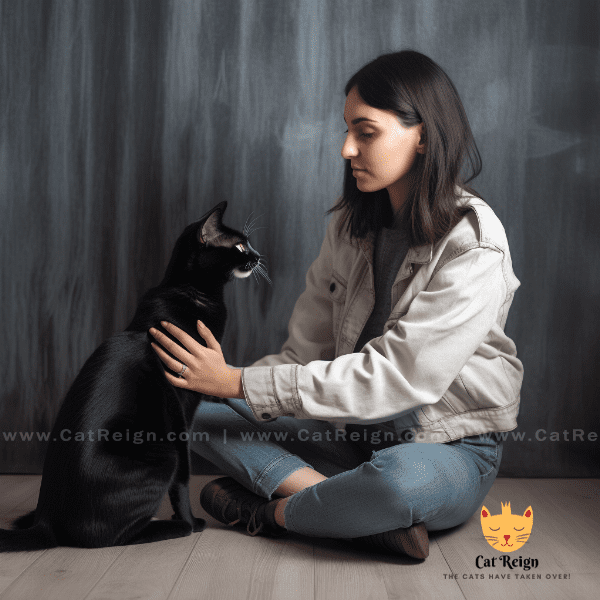
Common Misunderstandings About Feline Communication
Despite the many resources available on feline communication and body language, there are still several common misunderstandings that can make it difficult to interpret your cat’s behavior accurately.
Misunderstanding 1: Cats are Solitary and Don’t Communicate
While cats are often portrayed as solitary animals, they are actually social creatures that rely on communication to interact with their owners and other cats. Understanding your cat’s body language can help you better communicate with them and build a stronger bond.
Misunderstanding 2: Cats are Always Relaxed When They Purr
While purring is often associated with relaxation and contentment, cats may also purr when they are feeling anxious, in pain, or in distress. It’s important to pay attention to other body language signals to determine what your cat is trying to communicate.
Misunderstanding 3: All Cats Behave the Same Way
Just like humans, every cat is unique and may have their own individual communication style. It’s important to observe your cat’s behavior and body language over time to understand their unique quirks and preferences.
Misunderstanding 4: Cats Use Body Language to Manipulate Their Owners
Some people believe that cats use body language as a form of manipulation to get what they want from their owners. However, this is not true – cats use body language to communicate their needs and emotions, just like humans do.
In conclusion, understanding feline communication and body language can be a challenge, but it is an important part of building a strong relationship with your cat. By avoiding these common misunderstandings and paying attention to your cat’s unique communication style, you can better understand their needs and emotions, and respond appropriately.

Tips for Improving Communication with Your Cat
Improving communication with your cat requires patience, observation, and a willingness to learn about their unique communication style. Here are some tips to help you better understand your feline friend:
Tip 1: Pay Attention to Body Language
As discussed throughout this article, a cat’s body language can provide important clues about their mood and needs. By paying attention to their posture, tail movements, facial expressions, and vocalizations, you can better understand what your cat is trying to communicate.
Tip 2: Learn Your Cat’s Preferences
Every cat is unique and may have their own preferences for communication and interaction. By observing your cat’s behavior over time, you can learn what they like and dislike, and tailor your communication style accordingly.
Tip 3: Use Positive Reinforcement
Using positive reinforcement, such as treats or petting, can help encourage positive behavior and strengthen the bond between you and your cat. For example, if your cat is purring while sitting on your lap, you can give them a treat to reinforce this positive behavior.
Tip 4: Give Your Cat Space
Cats are independent creatures that value their personal space. If your cat seems to be avoiding interaction or displaying negative body language signals, it’s important to give them space and avoid forcing interaction.
Tip 5: Consult with a Veterinarian or Behaviorist
If you are struggling to communicate effectively with your cat, or if you notice sudden changes in their behavior, it may be helpful to consult with a veterinarian or behaviorist. They can provide valuable insights into your cat’s needs and help you develop strategies for improving communication.
In conclusion, improving communication with your cat requires time, patience, and a willingness to learn. By paying attention to their body language, learning their preferences, using positive reinforcement, giving them space, and consulting with experts when needed, you can build a stronger bond with your feline friend and better understand their needs and emotions.

Conclusion: Enhancing Your Bond Through Understanding
Understanding your cat’s body language and communication style is essential for building a strong and rewarding bond with your feline friend. By paying attention to their posture, tail movements, facial expressions, vocalizations, and unique preferences, you can better understand their needs and emotions, and respond accordingly.
Improving communication with your cat requires patience, observation, and a willingness to learn. By avoiding common misunderstandings, paying attention to body language, using positive reinforcement, giving your cat space, and consulting with experts when needed, you can develop a deeper understanding of your cat’s behavior and build a stronger bond.
Remember, every cat is unique, and may have their own individual communication style. By taking the time to observe and understand your cat’s behavior, you can create a more fulfilling and enjoyable relationship with your feline friend.
In conclusion, feline communication is a complex and fascinating topic, and one that can greatly enhance the bond between you and your cat. By putting in the effort to learn about your cat’s body language and communication style, you can create a more harmonious and rewarding relationship with your furry companion.
